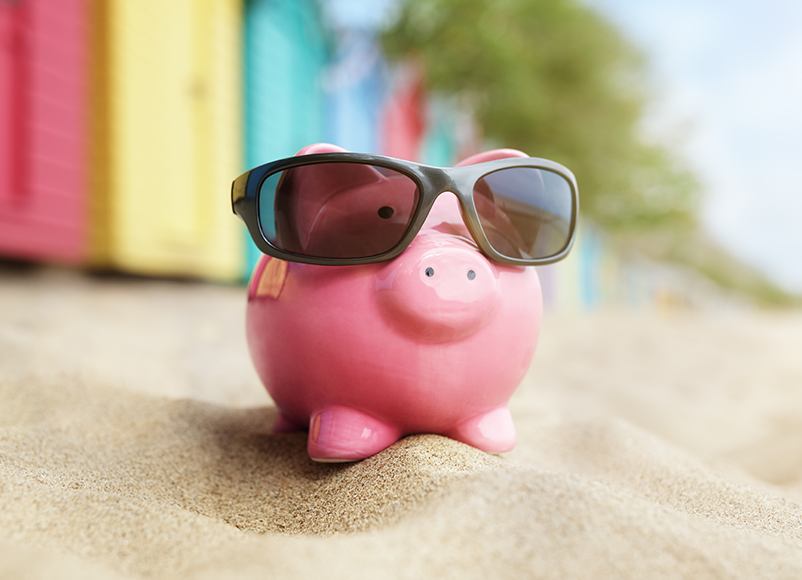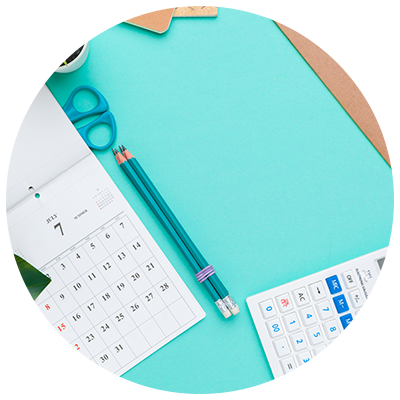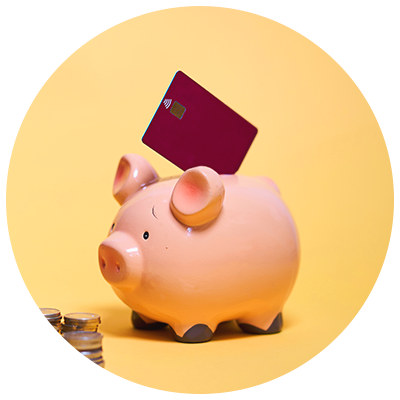4 Clever Ways To Save Money Fast

4 Clever Ways To Save Money Fast
Saving for an upcoming trip, the deposit on a mortgage, or the birth of a child? Or you may want to put more towards your retirement nest egg. For many people, saving requires discipline and a money plan that you can stick to. Fortunately, there are plenty of clever ways to save money fast.
In this article, we discuss a money plan that reveals four clever ways to save money each and every month. We also recommend tracking your savings to give you the inspiration and motivation to keep going when the temptation to dip into your savings descends.

Set Yourself A Money-Saving Challenge
If you want to learn how to save money, set yourself up with a money-saving challenge. This is a great way to prepare a money plan, minimise the risk of overspending and avoid dipping into your savings.
A money-saving challenge should be designed to save a set amount each month. All you need to do is set up a “dedicated savings account” (which you’re not allowed to touch until you reach your goals or in an emergency) and decide which tactics will help you to save enough money each month to accrue your financial targets.
We listed four clever ways to save money below to get you started - but you will probably also come up with your own clever ways to save money that fit your situation and lifestyle.

Make A Money Plan With A Budget Limit
The quickest way to save money is by not spending your hard-earned cash on items you don’t really need. Although savings and budgeting can seem difficult at first, you have to live within your means in order to save money.
When you learn to budget, you stay in control of your spending and efficiently save money. So set yourself fixed goals each month - including how much you need to save. And factor your savings into your budget.
Your money plan will start with the amount of income you have available to you. This will ordinarily be your salary, plus any money you earn on the side, either from a hobby, a second job, from dividends on an investment or an allowance.
The next step is to subtract actual living expenses. These are the sums of money you are obligated to pay each month such as mortgage/rent, energy bills, insurance, credit card debt (and taxes if you’re self-employed).
The next list of costs to account for is variable expenses. These include petrol, food, entertainment, socialising, birthdays/anniversaries and luxury items etc. This is the section of your list where you can identify where you can improve your budget and figure out how to save money.
Where possible, this list should also include unforeseen expenses such as repairs to your home, car or gadgets and appliances. This enables you to save for eventualities as and when they occur without dipping into your dedicated savings fund.
You should also include the amount you want to save in your money plan. Ideally, you should include savings in your list of fixed living expenses, but if money is tight, it’s okay to include it as a range in your variables list. e.g £10-£100.
Once you have finished your list and see where your money is going, you then have to decide where you can really save money. This will naturally be on your variables list, but you may be able to lower your outgoings from the fixed costs as well. For example, shop around for better insurance deals and use less energy so that you pay less on your utility bills.
But the best place to save money is by eliminating all the non-essential items you purchase that you don’t really need. For example, do you have any subscriptions or memberships you could cancel?
You could watch free content on social media sites like YouTube and Facebook instead of paying for satellite TV and a TV licence. There is a raft of interesting content created by online influencers on social media. Or make your own entertainment in the evenings with family and friends.
Then look at how much you spend on food and luxury items. Can you save money by preparing your own meals at home rather than dining out or buying takeaways? Do you overspend on luxury items such as makeup, clothes and chocolate?
The better you become at budgeting, the easier it is to adapt to a thrifty lifestyle. With a little ingenuity and some digging around, you will normally find alternative solutions that reveal clever ways to save money.

Set Up Auto Savings On Your Bank Account
As mentioned above, learning how to save money is far easier if you have a dedicated savings account where you pay a set amount each month. If you don’t feel as though you have the discipline to transfer money into your savings account, why not arrange an automatic savings plan with your bank or register for an app-only bank with a built-in money-saving facility?
Banks that offer automatic money savings accounts enable you to choose how much you save each month. You can do this by fixing a set amount to be transferred into your dedicated savings account.
If you’re self-employed and receive money from various sources at various stages of the month, a clever way to save money is to assign a percentage of your income to be transferred every time a deposit is made into your account.
For example, you may want to save 10% on every invoice. If you receive a payment of £500 you automatically transfer £50 to your savings account. If this strategy aligns with your incoming earnings, factor it into your money plan and determine what percentage you will need to save on each invoice in order to achieve your savings goal. And don’t forget to track your savings to make sure you’re on target.

Ditch the Credit Card
Credit cards make paying for goods and services incredibly convenient. Most people even use credit cards to draw money from ATMs and take advantage of cash-back models at supermarkets.
However, credit cards are not a good option if you want to save money. As a matter of fact, most people end up spending more by using a credit card than they would without one once you add up interest and charges on missed payments. According to moneyhelper.org.uk, the average interest rate charged on a credit card in the UK is 22%.
And it can be easy to forget to pay your credit card bills on time, especially if you have a busy lifestyle and are not in the habit of paying the invoice immediately. But failing to settle your obligations on time can put a dent in your savings.
Credit cards tie you into a revolving door of debt. If you are prone to making partial payments or miss a payment, you’ll hit your credit limit eventually. So relying on your credit card is not a sound financial strategy and certainly not a strategy for saving.
So the best thing to do is stop using your credit card altogether, or at the very least set a limit to how much you can spend on your credit or debit cards.

Shop Around for Insurance
Certain insurance policies such as home insurance and car insurance are unavoidable. However, the longer you stay with the same company, the more likely it is that your premiums will increase to account for the ageing of the property that is being insured.
Fortunately, the insurance market favours buyers - and savers. Because insurance companies rely on keeping existing customers happy and acquiring new customers, they always have to create attractive deals.
That means you will always find a company that is offering a better deal on home insurance and car insurance than your existing deal. In addition, you could also take out private car excess insurance and home excess insurance so you’re not out of pocket if you have to make a claim on your policy.
Because cars depreciate by up to 60% in the first three years, GAP insurance is a clever way to save money. If your car is written off in a road traffic accident, stolen or damaged, GAP insurance ensures that you recover the full value of the car minus what you have already paid on it.
For example, let’s say you purchase a car for £20,000 and the vehicle is stolen. At the time you have paid £5000 on your car loan, but you still owe another £15,000. Your standard insurance policy only values your vehicle at £8000 meaning you owe £7000.
You could continue to pay off the loan at your usual rate until the loan is paid off. But essentially you are paying for an asset you no longer have. Or you pay off the loan immediately but have to dip into your savings to access the £7000 you owe. GAP insurance will pay the £15,000 for you.
Some insurance companies also offer discounts for insurance bundles. “Bundling” also makes it easier to streamline payments and renew policies. So if anything does go wrong with your home or your car, you are fully covered for less spend - which you can add to your savings account.

